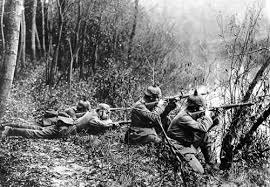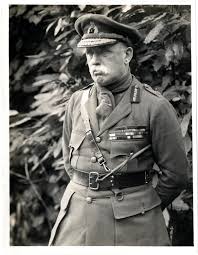Germans seek heights to dig in; British protect supply lines at Channel coast
Special to The Great War Project
(10-11 September) Germany loses the Battle of the Marne. Now it’s their turn to retreat.
They are pulling back across the Marne. Their goal; a ridge rising 500 feet above the River Aisne, about 35 miles north of the Marne. That could be a good place to dig in and plant their defenses.
It will take a few days getting an army there. And it poses other challenges. The ridge is 25 miles long. The river itself is deep and wide, passable only by bridging, writes one historian. Not all the bridges are blown in the earlier Anglo-French retreat, but still, the German army will need to construct more bridges to get its army across quickly in the face of the Anglo-French pursuit.
First the Germans launch one last desperate attack against the French.
It occurs at night on September 10th — 100,000 soldiers ordered to carry out a bayonet attack.
“The consequence was a disaster,” writes historian Max Hastings. “The attackers failed to achieve a breakthrough, and French artillery, the ‘black butchers’ punished the packed ranks of infantry mercilessly.”
Not all the German troops are happy about the retreat, but they carry out orders.
At the same time that the Anglo-French armies are chasing the Germans north across the Marne, the Germans are seeking to turn the French left flank. And the French are seeking to outflank the German flank. What this means is that both armies are moving rapidly west toward the English Channel.
This becomes what historians term The Race to the Sea. It is more than a mere tactical maneuver. In their mutual flanking efforts, both sides are seeking to reach the English Channel coast first.
If the Germans win this race, they are in a position to cut off the British supply lines across the Channel.
“The race to the sea was the second decisive phase of the war in the west,” writes historian Martin Gilbert.
By this time, only six weeks into the war, the clashes are cataclysmic, the losses so unfathomable that both sides are in the process of forming a new more realistic appreciation of their adversaries. The British commander on the battlefield, Sir John French, writes to his superiors in London urging them “not to underestimate the German military capacity,” according to Gilbert.
“It will never do,” French writes, “to oppose them [the Germans] with anything but very highly trained troops led by the best officers.”
“For five solid days we have been pursuing instead of pursued,” French writes to a friend on this September 10th a century ago. “And the Germans have had simple Hell.”
As for the Germans, Gilbert writes, they too are developing a grudging respect for their opponents. They “recognized the qualities of their so-recently contemptible adversaries.”
On these days, there are also significant developments on the Eastern Front.
Just as the German army is in retreat now north of the Marne, so too is Germany’s ally Austria-Hungary failing to hold the line against the advancing Russian army in the territory known as Russian Poland. The Russians press further, forcing a further Austrian pullback into the then Austrian territory known as Galicia.
One soldier in an Austrian artillery unit is Ludwig Wittgenstein, who would become a world famous philosopher after the war. He writes in his diary, “The Russians are on our heels. Have lived through frightful scenes. No sleep for thirty hours, am feeling very weak and can see no external help.”
The battlefields on both Eastern and Western Fronts are hardening.



